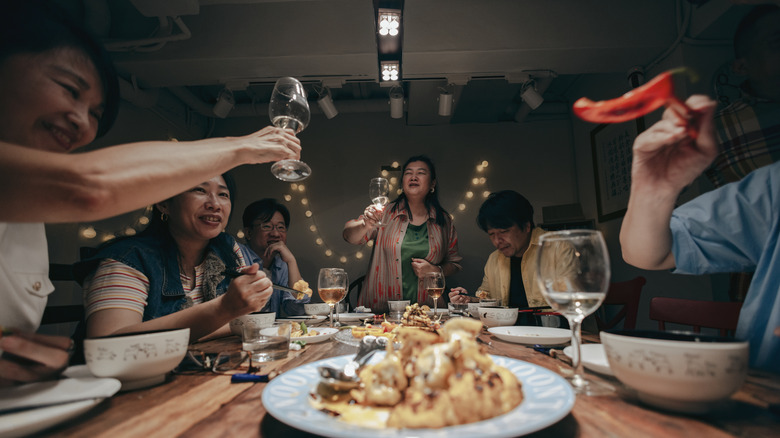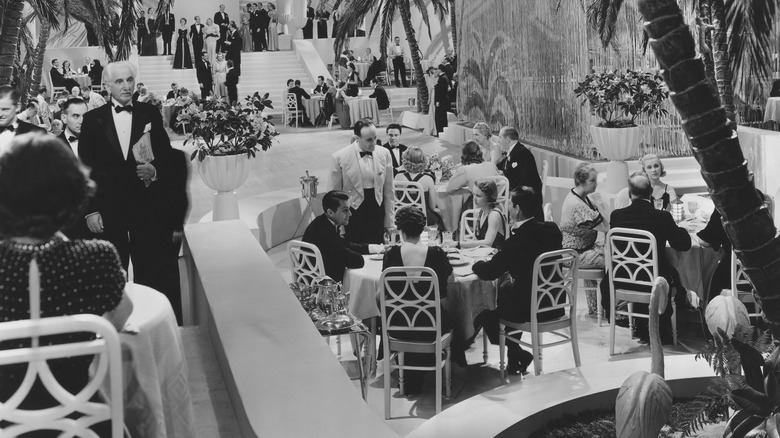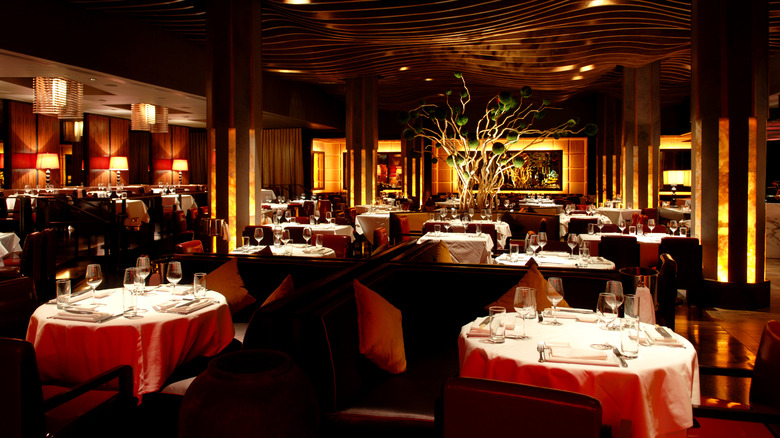A Supper Club Is More Than Just A Restaurant, It's A Retro Dining Experience
Describing what makes a "supper club" a supper club is like trying to describe the taste of vanilla — you know it when you experience it. Connotatively, just the name "supper club" carries an air of luxury and glamor, and indeed, supper clubs offer a more private dining experience than restaurants. They're typically characterized by a limited number of guests, a cozy atmosphere, a fixed menu serving upscale fare, limited operational hours, and particular care to a curated and intimate ambiance. Reservations are often required.
Supper clubs tend to be family-run establishments, lending to their intrinsic sense of hospitality, accessibility, and deeply personal feeling. In other words, if it feels like your go-to supper club has a Midwest sensibility, there's a reason why. In fact, Wisconsin native Craig Culver was inspired to create his chain of fast-casual eateries (Culver's) after the classy yet familiar supper club that his parents used to take him to as a child. As Culver recounted to Eater, "It was the place to be. It was a gathering place on Friday nights especially; [it] was the fresh fish fry night and Saturday was lobster and prime rib. And both nights, or every night, was a brandy old fashioned, sweet." Modern foodies continue to be drawn to these retro dining establishments, from the Copacabana in New York City to Turf Supper Club in California.
History of supper clubs
For all their cozy familiarity, supper clubs actually have Prohibition to thank for their existence. In the 1920s, as the mob took over the subterranean distribution of alcohol to speakeasies around the country, transporters needed roadhouses stationed along their routes. The first speakeasies and roadhouses started cropping up in Wisconsin, Michigan, and Minnesota, quickly spreading to New York and other densely populated urban areas. When Prohibition finally ended in 1933, foodies and general life enthusiasts were stoked to have their booze and bars back, but now, there was something missing — the lively social clubs that these speakeasies and roadhouses provided, as well as their atmosphere of community and inherent exclusivity. Plus, as WWII came to a close, war-weary Americans finally had some money again, and they were more than ready to have a little fun. Enter supper clubs.
The pinnacle of nightlife, supper clubs offered food, drink, dancing, and live music, especially jazz. To help set the scene, you could still smoke inside in the '30s and '40s. The first official supper club was opened in Beverly Hills in the 1930s by a guy called Lawrence Frank from Milwaukee, Wisconsin. At his joint, guests could order a prime rib, baked potato, salad, and Yorkshire pudding for $1.25. Supper clubs started to dwindle in the 1960s as public interests began to change. People still went dancing, but focused more on entertaining at home.
The new age of supper clubs
Today, it seems like the spirit of the supper club has split into two branches: nightclubs and private bars and restaurants that you have to pay to get into. Supper clubs still toe the line between familiar and exclusive. Against the current economic backdrop of global uncertainty, sitting down to oysters Rockefeller and some live jazz is pretty out of the question for many modern consumers. But, for some, supper clubs can be a warm place for sharing dinner with family.
A new crop of supper clubs has emerged, drawing once again on the inherent nostalgia and romantic appeal of the originals. In this second wave of supper clubs, Kimball's East opened in California's San Francisco Bay Area in 1989, hosting such jazz giants as Dizzy Gillespie, Herbie Hancock, and Eartha Kitt, among others. Anthology in San Diego hosts live music six nights a week, serving cocktails, elevated starters like lobster rolls and ahi tuna tartare, and classic entrees like beef tenderloin and lamb chops.
Other prominent supper clubs of yore remain in operation, attracting crowds with old-time sensibilities where dinner is as much a meal as a reminder of simpler times. The iconic Rainbow Room at Rockefeller Center in Manhattan is alive and well. Great Blue Heron in Minnesota serves fare from approachable to elite, like onion rings, nachos, cod, and sirloin steak. Today, the state of Wisconsin is home to over 250 supper clubs.


